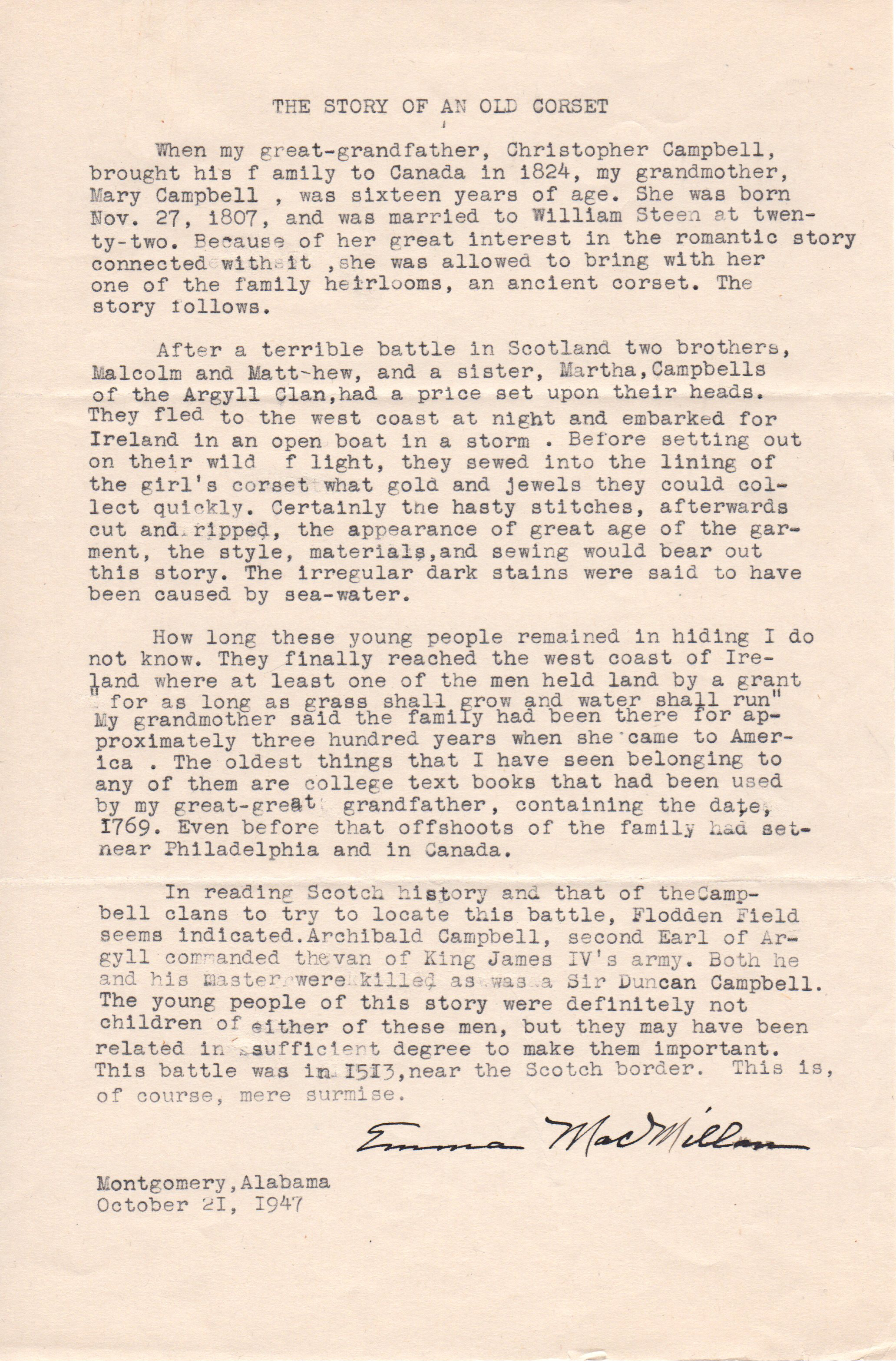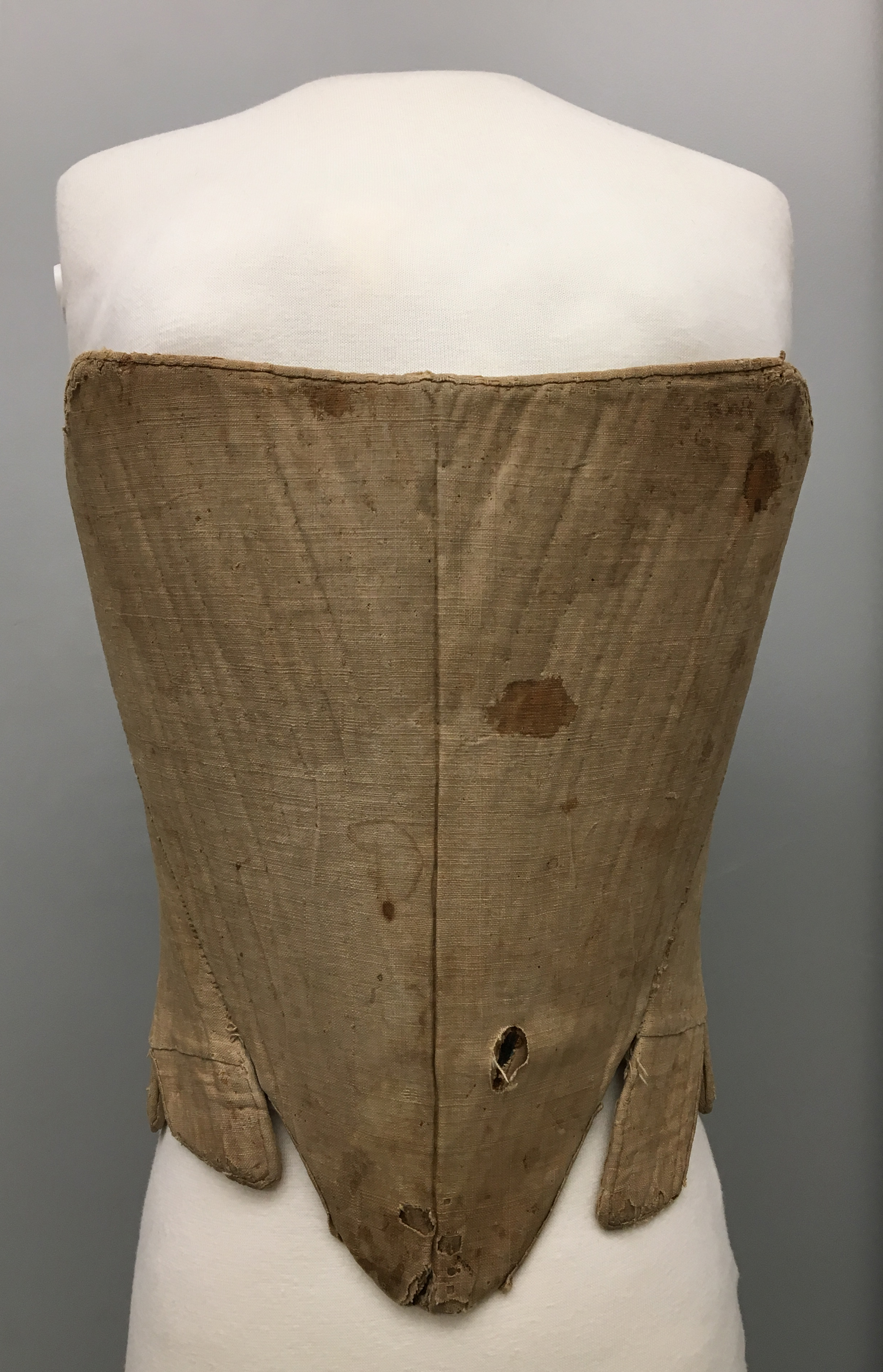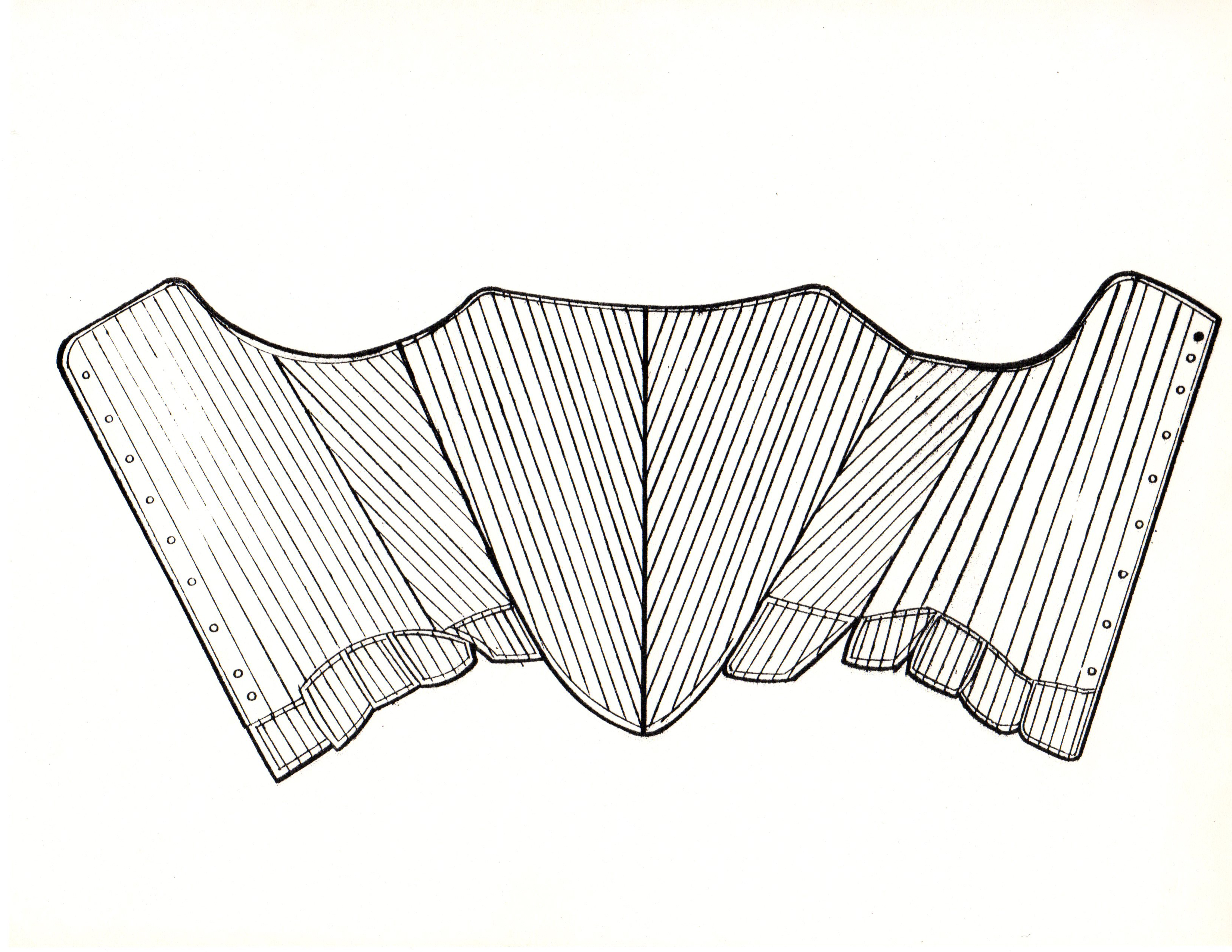Blog post by Samantha Stern (’17)
In a study collection like the CCTC, artifacts sometimes turn up with exciting, mysterious histories. One such garment is corset #1133. Donated in 1947, this undergarment is made of coarse linen hand stitched over a whalebone structure. The corset fastens with hand embroidered eyelets and ribbons that are long gone. However, the fantastical story of this garment is not reflected in its humble design.
When the donor’s grandmother came to North America is 1824, she was allowed to bring with her one of the family heirlooms–an “ancient corset.” The story of the corset, according to its donor, actually began in the 1500s. The story is as follows: after a terrible battle in Scotland, three siblings—Malcolm, Matthew, and Martha Campbell of the Argyll clan feared for their lives. One night, in an open boat, they fled to Ireland in the hopes of a safe future. In preparation, Martha sewed the family gold and jewels into the lining of her corset. The hasty stitching and irregular dark stains on the corset are said to have been caused by the sea water and the stitching of the jewels. Eventually, they made it to the west coast of Ireland, where one of the brothers held a land grant for “as long as grass shall grow and water shall run.” The family stayed in Ireland for almost 300 years before moving to the Americas. In the donor’s research she came across the battle of Flodden Field, where Archibald Campbell, the second Earl of Argyll, commanded an army. Although he is not the father of the three siblings, he may have been related in some form, which would have made these siblings targets.
While many of us, especially me, want to believe this romantic story of a middle-of-the-night escape, costume scholar Elsie McMurry performed extensive research on the corset design. She explained that the proper name for a corset in the eighteenth century was “stays, jump, or gazette” (McMurry, 35). The heavily boned structure of this particular corset reflects technology from the seventeenth century, which carried over into the late 18th century when corsets were made shorter and lighter. The structure is made of between 5 and 10 layers of coarse linen sandwiching and as many as 124 pieces of whale bone (McMurry, 38). The finished garment appears to only have 2 seams, but it is actually made of 8 total pattern pieces, and connects in the back with eyelets and laces. The main fiber composition is likely flax (McMurry, 38). McMurry confirmed that the corset’s origins are in Scotland and “fits into a well-established eighteenth century context” rather than a sixteenth century narrative (McMurry, 39).
Eighteenth century stays also perpetuated eighteenth century beauty standards for women by shaping their silhouettes. Scholar Sorge-English explained:
Pattern pieces of the stays, when placed one against the other, had little or no shaping between them. In other words, the pieces fit together smoothly, resembling those of a jigsaw puzzle and resulting in a two-dimensional garment that could lie flat on a table. The female body would thus have been molded into the shape dictated by the stays that made little or no allowances for the curves or prominence of the breasts, which compressed the ribs, accentuated the narrowness of the waist, and accommodated the fullness of the hips only through the vertical slashing of the elongated side pieces (Sorge-English, 31).
Furthermore, these stays were “broken in” by the wearer, whose natural body heat actually molded the whalebone to better fit the body. This act of breaking in the stays may account for the worn in appearance of this particular corset. Sorge-English x-rayed multiple eighteenth century corsets and found that middle class owners were more likely to repair their old stays than purchase new ones, probably due to the comfort of “broken in” stays (34). The stays that she studied were extremely similar in construction, material, and shaping to the corset in the CCTC. Furthermore, comfort of the wearer could account for the worn down areas, stitched repairs, and replaced lining to the CCTC corset more than the Scottish escape can.
Although I love the dramatic story of this corset and its daring escape, as fashion scholars we must put aside stories in favor of in-depth research. Histories associated with material culture may become tall tales over time, but their materiality and construction details are telltale.
Sources:
McMurry, E. F. (1986). American Women’s Dresses–1780-1900: A Guide for Identification With Photographic Documentation. Ithaca, NY: Cornell University.
Sorge-English, L. (2013). ’29 Doz and 11 Best Cutt Bone’: The Trade in Whalebone and Stays in Eighteenth-Century London. Textile history.






So well-written, and such an interesting story!